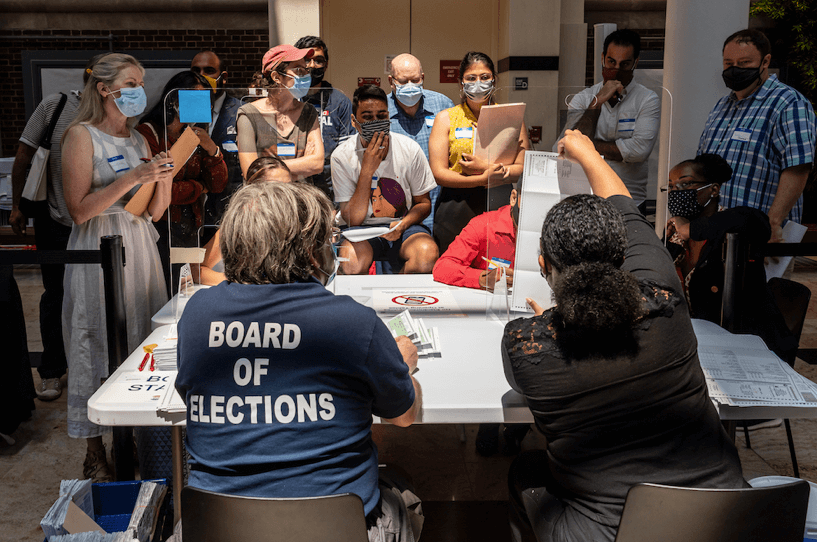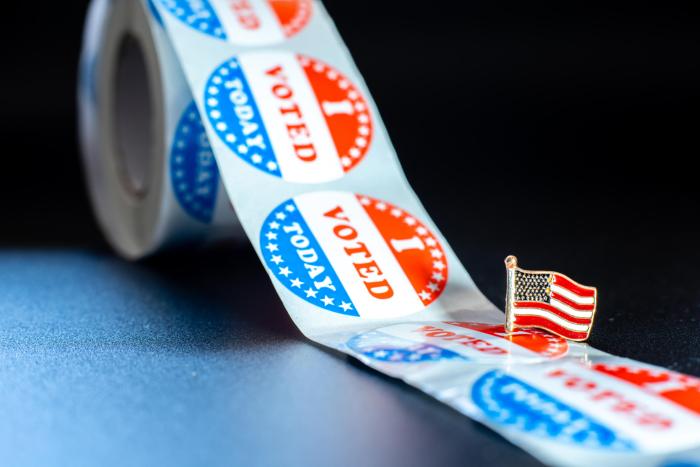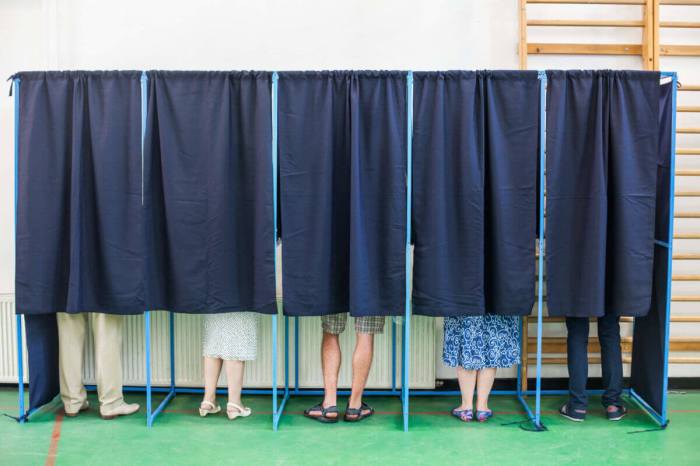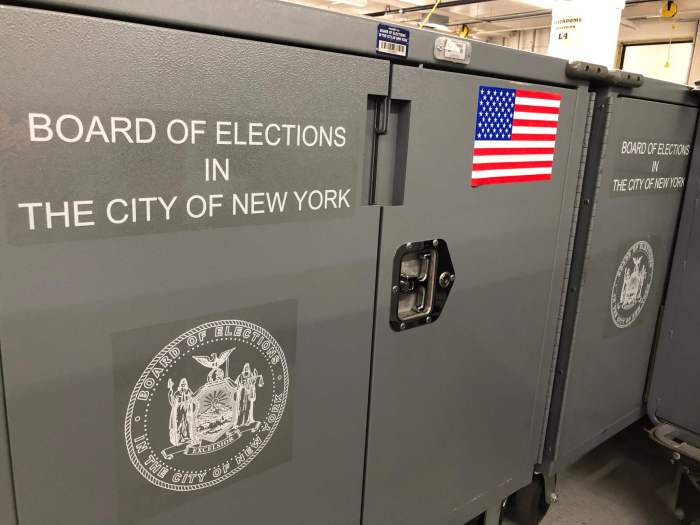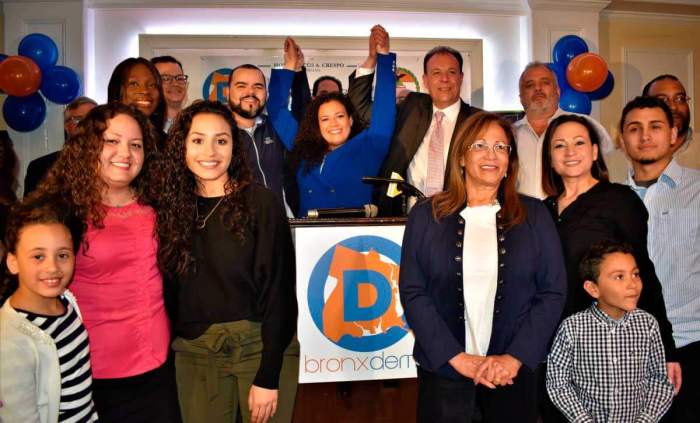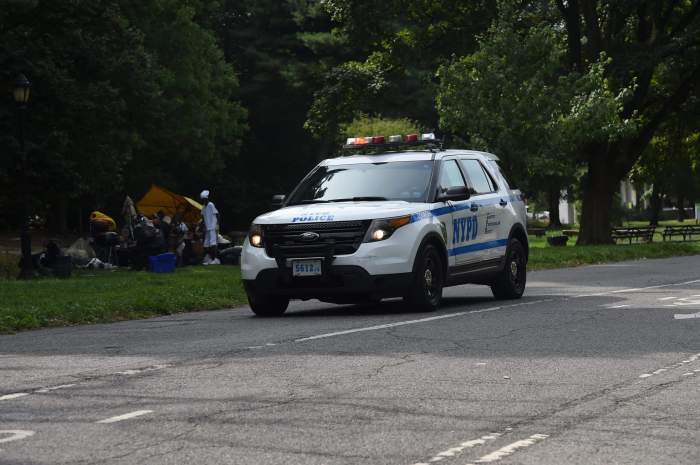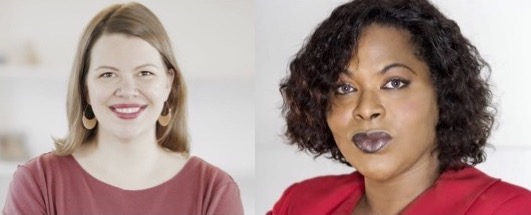The New York State Assembly will hold a public meeting on July 18, looking to solicit feedback on its first-ever ranked-choice elections which took place last month.
In 2019, 70% of voters in New York City approved a ballot measure that would implement ranked-choice voting — which allows voters to rank up to five candidates in order of preference — to decide primary and special elections for the offices of mayor, public advocate, comptroller, borough presidents and City Council.
Democrat Assemblymember Latrice Walker, who represents Brooklyn’s 55th District and chairs the state’s Election Law Committee, announced the hearing for July 19 beginning at 10:30 a.m at 250 Broadway in Manhattan.
Ranked-choice voting has been used in 22 jurisdictions across the nation in their most recent elections, with 53 jurisdictions projected to use the voting method in upcoming elections, according to FairVote.
According to city Board of Elections tallies, 125,709 absentee ballots have been returned in the June 22 primary and are in the process of being counted.
Early returns for ranked-choice voting have been mixed so far. The city’s voting software includes Cast Voter Records (CVR) which produces ballot images that ultimately tabulates unofficial race results.
In a now-deleted July 29 statement on Twitter acknowledging a counting error, the city Board of Elections stated that during the first extraction of tallies from the CVR, both test and election results were pulled, leading to a discount of 135,000 test ballots that temporarily led to a large discrepancy.
In a clarification on July 29, the board said human error led to the discrepancy stemming from pre-election testing that was not cleared from the file used for the initial ranked-choice tally. The tallies were removed, according to the board, before results were posted on Wednesday.
These discrepancies impacted the initial result for the city’s most heavily anticipated race, the Democratic primary for NYC mayor.
Official results aren’t expected until the week of July 12, according to the BOE.
The June 29 results showed that frontrunner Eric Adams, the Brooklyn borough president, held a 15,908-vote lead in the Democratic primary, however, that was 75,000 votes lower than his following the June 22 primary night results.
The tally has missed more than 124,000 ballots, which is roughly 13% of total balloting.
“The vote total just released by the Board of Elections is 100,000-plus more than the total announced on election night, raising serious questions,” Adams’ campaign said in a statement. “We have asked the Board of Elections to explain such a massive increase and other irregularities before we comment on the Ranked Choice Voting projection.”
Adams was leading Kathryn Garcia, the city’s former sanitation commissioner, by just 14,755 votes. And Maya Wiley, former counsel to incumbent Mayor Bill DeBlasio, trailed Garcia by only 347 votes in the final ranked-choice tabulation round of in-person ballots. But on July 6, another batch of results were released with Adams leading 50.5% to Garcia’s 49.5% leading to the Associated Press calling the primary for Adams, and Garica and Wiley conceding the race on Wednesday.
A recount is expected whenever final results are delivered, as all three candidates have filed lawsuits demanding recounts last week. The winner of the Democratic primary will face off against Republican nominee Curtis Silwa, who won his own primary on June 22 against Fernando Mateo and is considered a heavy underdog given the city’s large voter registration advantage favoring Democrats, with 3.7 registered Democrats to 566,000 Republicans.
The mishaps and long delays between results have drawn criticism from national Republicans in recent weeks.
New York Rep. Claudia Tenney stated that the system disenfranchises voters in New York City, while Arkansas Sen. Tom Cotton argued that the process is a “scam” that “takes away the chance to get a clear contrast between candidates.”
Local criticism of the voting software has also come from candidates involved in June 22 races including various New York City councilpersons, and officials with the Black Latino and Asian Caucus, which criticized the quick roll-out of ranked-choice voting, with concerns of voter disenfranchisement of the city’s Black and Hispanic voters.
Shareef Jones, a Gun Hill resident, said that the process was “confusing” and wished that he had more forewarning before casting his ballot on June 22. Conversely, Castle Hill resident Mya Rodriguez said that it’s “understandable” that the process would have hiccups in its first year, but it’s the most “democratic voting option.”
“I think we need to be patient with this system in its first year,” she said. “Democracy includes more choices and more options to have your preferences entertained and I believe New York City is the best place to have ranked-choice voting.”
The Ranked Choice Voting Resources Center touts the benefits of the system citing cheaper costs of elections and a higher turnout.
“With ranked-choice voting, a jurisdiction can get the benefit of two rounds of voting in a single, more representative, higher turnout election,” according to the organization’s website. “That is why ranked-choice voting is often called instant runoff voting. In this context, RCV can save the jurisdiction a lot of money — the entire cost of a second election — while helping promote majority support and civil campaigning.”
Reach Robbie Sequeira at rsequeira@schnepsmedia.com or (718) 260-4599. For more coverage, follow us on Twitter @bxtimes and Facebook @bxtimes.

